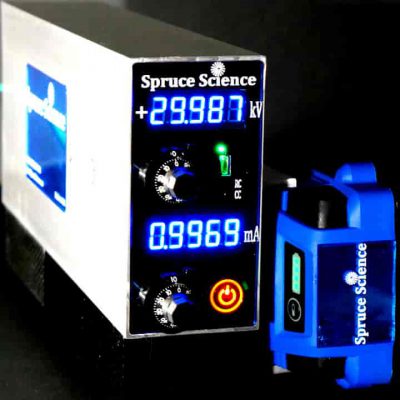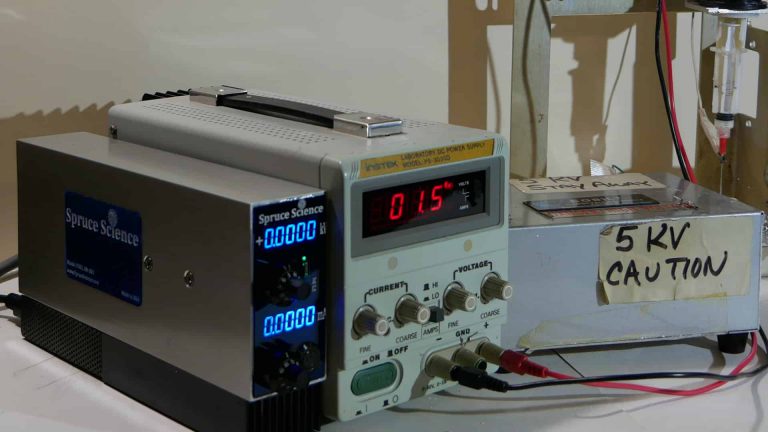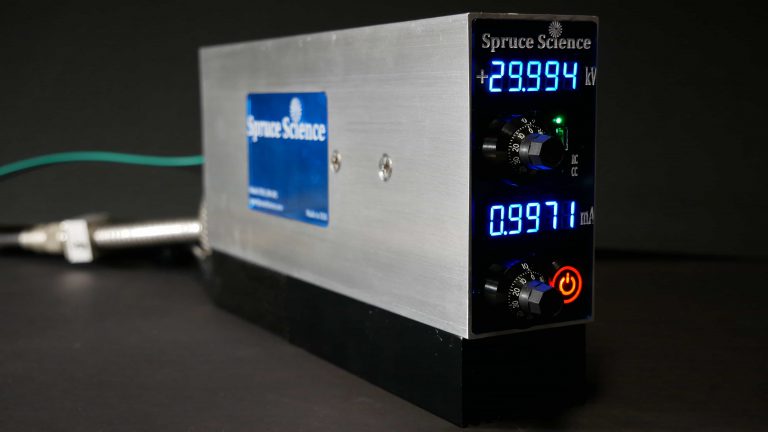Minimalist ESI Ion Trap for Generating and Confining Charged Particles at Atmospheric Pressure.
Demonstration Notes
Introduction
In this demonstration of ESI Ion Trap, you will see particles levitating in a volume of space. Our hope is to illustrate to you the value of LabMate high voltage switch mode power supply from Spruce Science for laboratory use. Our focus is in offering state-of-the-art precision high voltage power supply but if needed, we can provide you free consultation for building ESI Ion Trap.
After reading through this documentation, you will see the construction of an amazing ion source that is powered by an adjustable DC high voltage power supply. You will also see a vibrant ion trap that uses AC high voltage that is simple in design but effective. When combined together to form ESI Ion Trap, you can auto generate ions then trap the particles.
Experimental setup
The schematic illustration for the ESI Ion Trap is shown below.
The left side of the ground plate is where electrospray ionization takes place. The sample solution is loaded inside a syringe pump and a DC motor slowly pushes the liquid through the needle. Using LabMate high voltage power supply from Spruce Science, high voltage in the range of 2kV to 10kV is applied to the liquid sample directly for electrospray ionization to make dry and tiny droplets that are electrically charged.
The second part shown in the ESI Ion Trap illustration is the ion trap itself. And that consists of the ring electrode that is surrounded by ground. What happens here is that electrically charged particles are trapped inside ring electrode because of the time varying electric field.

Power supplies for ESI Ion Trap
LabMate high voltage power supply used in this experiment is shown on the left side of the picture and is capable of producing 30kV at 1mA.
The compact form factor is great for usage in space-constrained systems since even the simplest experiments end up occupying a lot of space. It is also very convenient that the precision high voltage power supply is highly integrated because it simplifies the setup process. The only thing required from the user to get started is to plug-in.
In the middle is the DC power supply to energize the DC motor that drives the syringe pump.
On the right side of the picture is the generator that produces AC high voltage at 60 Hz.
Step 1: Sample preparation
For sample particles, I used cornstarch mixed with 91% isopropyl alcohol. Cornstarch was actually chosen out of convenience since it was readily available and it worked spectacularly well. After mixing thoroughly, the sample solution was loaded inside the syringe pump.
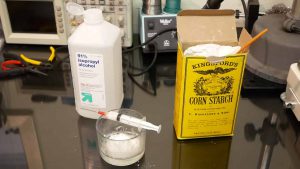
Step 2: Generate ions through electrospray ionization
LabMate high voltage DC power supply is used to generate electrically charged particles. When high voltage is applied from the needle, which is carrying a liquid flow, to the ground plate, there is this characteristic formation known as a Taylor cone. That Taylor cone is then pulled into a jet. From there, the jet is further disrupted into a series of tiny droplets. This characteristic formation is established when high voltage is balanced with pumping rate.
Here is a sample picture of the characteristic Taylor cone formation during electrospray ionization process. For more information, take a look at our demonstration note on electrospray ionization of sodium coupled with a gas flame for optical emission spectroscopy.
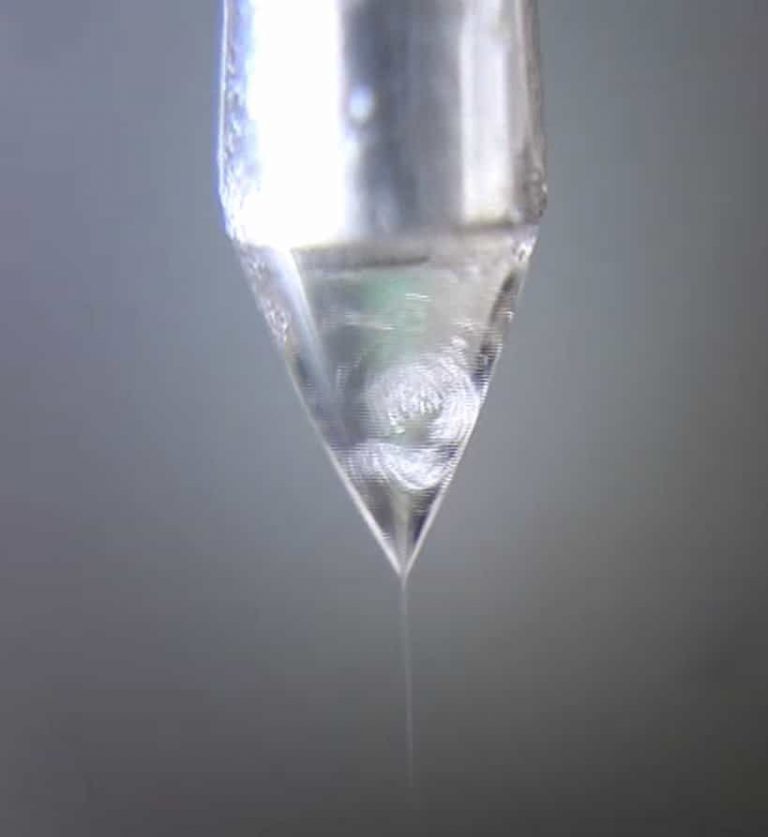
Having an adjustable high voltage switch mode power supply is great for ESI tuning of the high voltage parameter to balance with pumping rate. To generate intense electric fields, high voltage is applied to the hypodermic needle that is 1.2mm in diameter. The physical gap between the needle tip and ground plate is 20mm.

For electrospray ionization of corn starch solution, 4500 volts provided good results. The intense electric field would generate dry and tiny particles that are electrically charged. In the picture shown below and you can see the deposit of white powder coating on the perforated aluminum sheet.
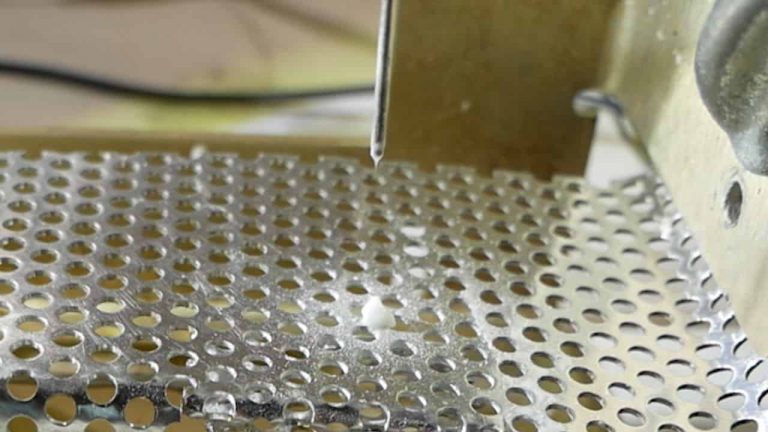
Step 3: Trap incoming particles using ion trap
The great thing about the ESI ion trap demonstration is that all of it is operating in air at ambient pressure so it simplifies the experiment setup. The ring electrode shown have an ID of 14.5mm diameter and OD of 25.4 mm. Teflon fixture is used to hold the ring electrode that is electrically floating.
AC high voltage of 3kV at 60 Hz is applied to the ring electrode to trap the ions that are coming through the perforated aluminum sheet. Over time, you will see accumulation of particles that are trapped inside the ring electrode. The working principle is during half the AC cycle, the ring electrode will be the same polarity as the charged particle so the particle will feel a repulsive force. In the next half cycle, when the polarity of the power supply changes, it will feel an attractive force. This periodic application of alternating repulsive and attractive potentials confine the charged particles in a volume of space.
For more information, take a look at Newtonian Labs. They have extensive details on the physics behind the ion trap.
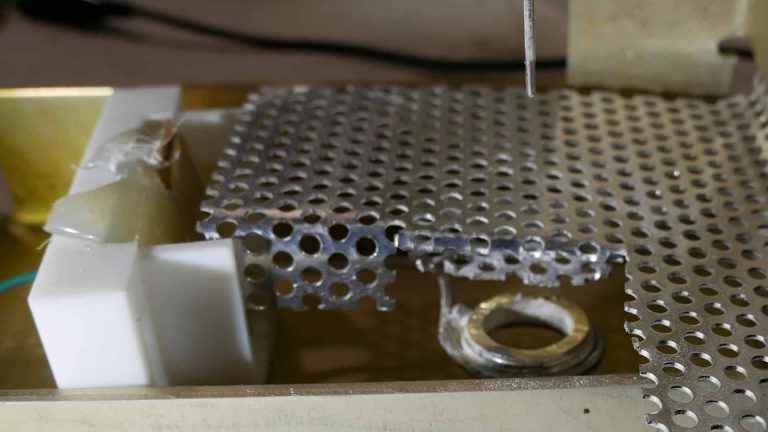
Trapped particles can be seen below inside the brass ring. The particles are very tiny and good lighting is necessary for visualization. A small high brightness LED flashlight is really effective. Lasers also work if you have them readily available.
The particles are moving back and forth but it appear as if they are floating strings.
You will find several other ion trap demonstrations and most of them use a wand to hand deliver the particles. This is the first video demonstration where the sample delivery is automated.
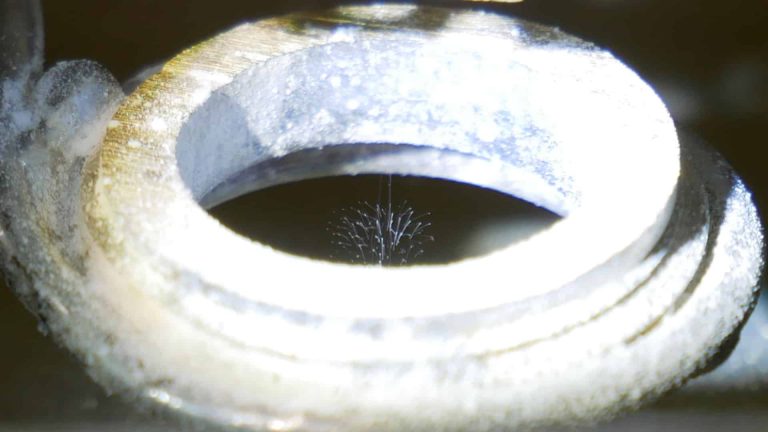
Conclusion
- For ESI ion trap operation, DC high voltage is used to generate ions and AC high voltage is used for ion trapping.
- LabMate high voltage power supply is used to tune the electric field necessary for electrospray ionization.
- When electrically charged particles that are generated by the electrospray ion source is brought to the ion trap, the particles are confined in a volume of space.
- It is very beneficial and useful to have a reliable precision high voltage power supply that is adjustable from 0 to 30kV with 1mA output capability for experimentation.
Video Demonstration
